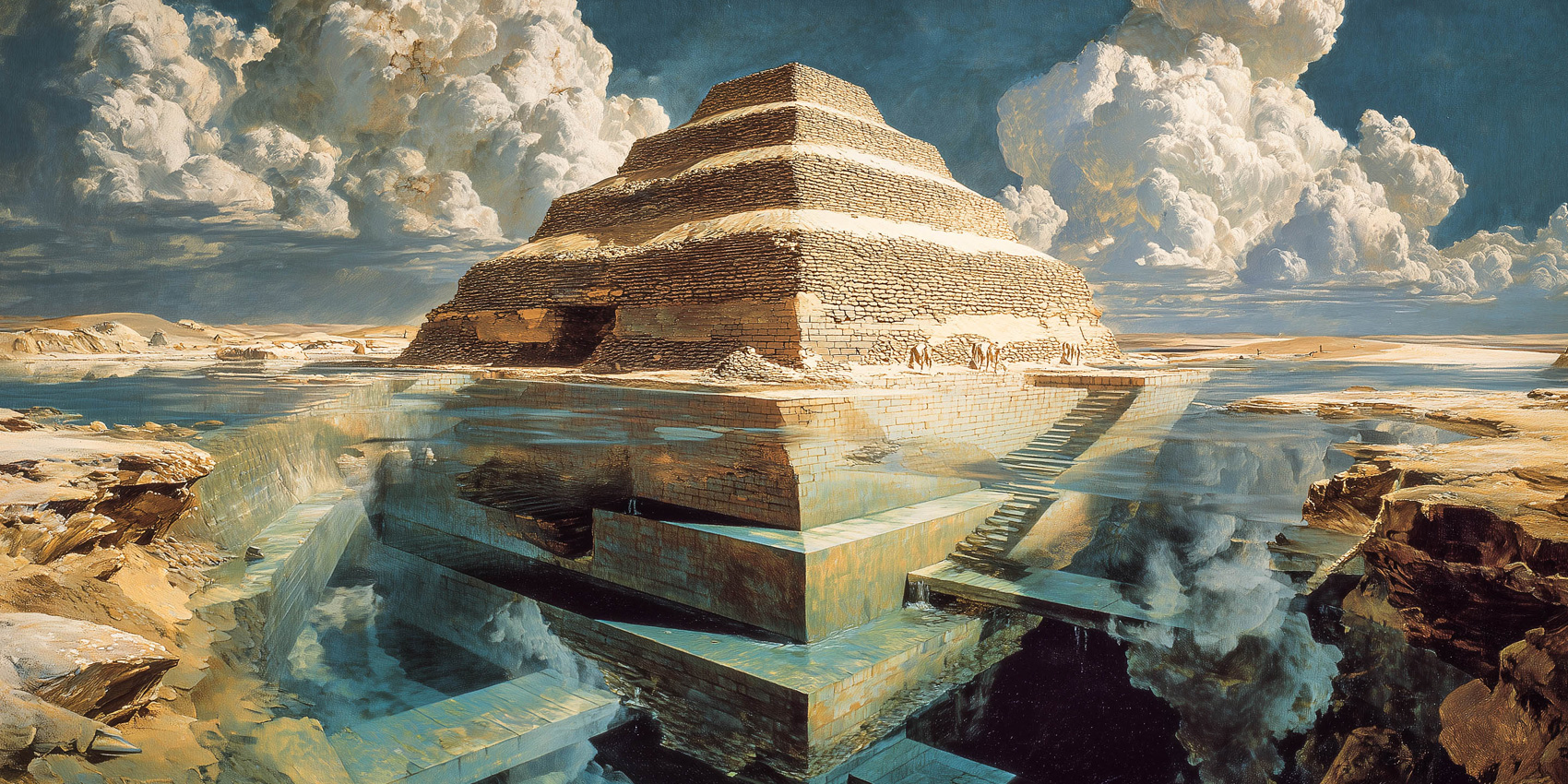“From algorithms to aliens — AI meets ancient Egypt.”
In the sands of Giza, cutting-edge AI and simulation technologies are helping answer the age-old question of how the pyramids were built — and in the process, are shaping a modern understanding of AI how pyramids were built. New studies in 2024–2025 harness machine learning, 3D modeling, and even cosmic scans to decode the engineering genius of ancient Egypt – offering human explanations to feats once thought alien.
AI How Pyramids Were Built: New Clues From Tech Advances
For decades, the construction of Egypt’s pyramids – especially the Great Pyramid of Giza – has fascinated scientists and conspiracy theorists alike. Many speculated that extraterrestrials helped build these colossal structures, overlooking the ingenuity of human engineers 5,000 years ago. But now, artificial intelligence and high-fidelity simulations are shifting the perspective toward human achievement. Today, researchers use AI-driven tools to analyze archaeological data and test construction theories. This brings fresh evidence to one of history’s greatest building mysteries. As a result, this wave of studies finally puts science behind the phrase AI how pyramids were built.
In 2024, researchers proposed that ancient Egyptians may have built the Step Pyramid of Djoser using an “incredibly clever” construction method — a water-powered hydraulic lift. The study, published in PLOS ONE, suggested that the builders harnessed Nile floodwaters to raise heavy stone blocks. Instead of massive external ramps, they likely directed the water into twin shafts beneath the pyramid, using buoyancy to float multi-ton blocks upward. Essentially, they created a primitive elevator driven by hydraulic pressure.
“Ancient Egyptians are renowned for their pioneering hydraulic engineering… This research opens up a new area of exploration: the use of hydraulic power in constructing the Pharaohs’ massive structures,” the authors noted.
Simulations That Rewrite Ancient Construction
To verify the hypothesis, researchers will simulate the hydraulic system under ancient environmental conditions using AI-powered 3D modeling and physics engines. This is where AI how pyramids were built becomes more than a concept — it turns into a testable reality.
By creating detailed digital models and running physics-based simulations, the team can test whether canal water and simple pumps truly could elevate stones. These computer simulations — enhanced by machine learning — let archaeologists essentially “re-run” history thousands of times virtually. They tweak water flow, labor force, ramp angle and other variables to see which method is most feasible. That’s AI how pyramids were built, one simulation at a time.
High-Tech Scans and AI Reveal How Pyramids Were Built
AI is also peering inside the pyramids in ways humans never could – literally seeing through stone. In 2023, a hidden corridor above the Great Pyramid’s main entrance was confirmed using advanced AI-driven imaging. By merging data from ground-penetrating radar, muon scans, ultrasound and 3D electrical resistivity, researchers created a high-clarity composite image of the pyramid’s interior.
Such discoveries inform construction theory. The corridor and voids might be remnants of internal ramps or stress-relieving chambers. By analyzing these features, AI tools help reverse-engineer the builders’ blueprint. And that takes us one step closer to understanding AI how pyramids were built from the inside out.
In 2025, an Italian team used synthetic aperture radar (SAR) and vibration tomography from satellites to scan beneath the Giza plateau. The result: a vast 3D map showing tunnels and chambers nearly 2 kilometers long. To enhance radar precision, researchers fed AI models with thousands of medical and geological scans — allowing algorithms to distinguish solid rock from open voids with over 70% confidence. This method revealed potential man-made passages beneath the site — possibly quarries or internal ramps — supporting long-held theories of how the Great Pyramid was constructed. And it’s another powerful example of AI how pyramids were built being more than speculation.

Virtual Architects: How AI Learns to Build Like Ancient Egyptians
Some researchers are now letting AI discover construction techniques on its own. In experimental archaeology, reinforcement learning agents — a type of AI trained through trial and error — have been tested in virtual Giza environments. These agents receive only a few physical rules, yet they learn to build pyramid-like structures from scratch.
Over time, the AI developed efficient strategies. Some of these matched existing theories, like zigzagging ramps. Others introduced new possibilities, such as multi-stage sledging or counterweight-driven lifts. This kind of unsupervised learning helps archaeologists explore forgotten or undocumented methods. It also expands how AI how pyramids were built can be digitally interpreted.
Inside the Stones: AI Reads Tool Marks and Materials
Another exciting application of AI is in the analysis of micro-details — like tool marks on stones, or the mineral composition of mortar. Using computer vision, researchers feed thousands of high-resolution excavation photos into neural networks trained to detect anomalies or patterns. For instance, AI can distinguish between chisel marks made by copper versus bronze tools, helping date construction phases more accurately.
In one 2024 study, AI models identified consistent grooves along the base of certain blocks that suggest wooden rails were used to slide them into position — a detail long overlooked by the human eye. And when AI examines chemical traces in the mortar, it can match them to local quarries, further confirming how and where materials were sourced.
All these insights refine our understanding of AI how pyramids were built at the smallest scale — block by block, scrape by scrape.
Tech Toolbox: Key AI Tools Behind How Pyramids Were Built
Modern archaeologists now work with an impressive suite of AI-powered tools, including:
- Reinforcement Learning Models – to simulate autonomous pyramid construction strategies
- Computer Vision – for analyzing images of artifacts and building surfaces
- 3D Modeling + Physics Engines – to test structural feasibility and human labor logistics
- AI Image Fusion – merging radar, LIDAR, muon scans, and ultrasound into unified maps
- Pattern Recognition in Satellite Data – finding possible ancient roads, camps, or buried structures
Each of these tools contributes a piece of the puzzle — and together, they form a clear picture of AI how pyramids were built, from the foundations to the finishing touches.
AI vs Alien Theory: What AI Says About How Pyramids Were Built
No discussion of pyramid construction is complete without addressing the alien theories. For decades, people have suggested extraterrestrial engineers must have been involved, due to the sheer scale and precision of the pyramids. But modern AI-powered archaeology is dismantling those myths.
Simulations now show how tens of thousands of human workers, armed with basic tools and good logistics, could have completed the pyramids over decades. AI confirms that internal ramps, water-assisted lifts, and sledge systems were not only feasible — but likely. The phrase AI how pyramids were built no longer belongs to conspiracy forums. It belongs in peer-reviewed research.
Meanwhile, deepfake-style videos and memes — like AI-generated clips showing giants lifting stones — have gone viral. But these fictions are being debunked just as fast, thanks to the same technology. AI is helping scientists communicate facts and correct viral falsehoods. That makes AI how pyramids were built both a research trend and a cultural battleground.
From TikTok to Toolkits: AI in Popular Pyramid Culture
AI reconstructions of pyramid building are everywhere: on YouTube, TikTok, and even in museum VR exhibits. No discussion of pyramid construction is complete without addressing the alien theories. For decades, people have suggested extraterrestrial engineers must have been involved, due to the sheer scale and precision of the pyramids. But modern AI-powered archaeology is dismantling those myths.
Simulations now show how tens of thousands of human workers, armed with basic tools and good logistics, could have completed the pyramids over decades. AI confirms that internal ramps, water-assisted lifts, and sledge systems were not only feasible — but likely. The phrase AI how pyramids were built no longer belongs to conspiracy forums. It belongs in peer-reviewed research.
Meanwhile, deepfake-style videos and memes — like AI-generated clips showing giants lifting stones — have gone viral. But these fictions are being debunked just as fast, thanks to the same technology. AI is helping scientists communicate facts and correct viral falsehoods. That makes AI how pyramids were built both a research trend and a cultural battleground.
Final Thoughts: AI How Pyramids Were Built, Reconstructed at Last
The idea of AI how pyramids were built once seemed like science fiction. But in 2025, it’s a documented, data-driven process. With every simulation and scan, AI uncovers more evidence of ancient Egyptian engineering brilliance — and less need for mystical explanations.
Today, AI doesn’t just help us look into the past. It lets us test it, visualize it, and reconstruct it. From lifting stones with water pressure to revealing hidden corridors, AI is doing what pharaohs might have dreamed of: building forever.
Ready to go deeper?
Follow AI Miracle for more thought-provoking stories about artificial intelligence — from ancient mysteries like how the pyramids were built, to modern breakthroughs in science, creativity, and everyday tools powered by AI.



